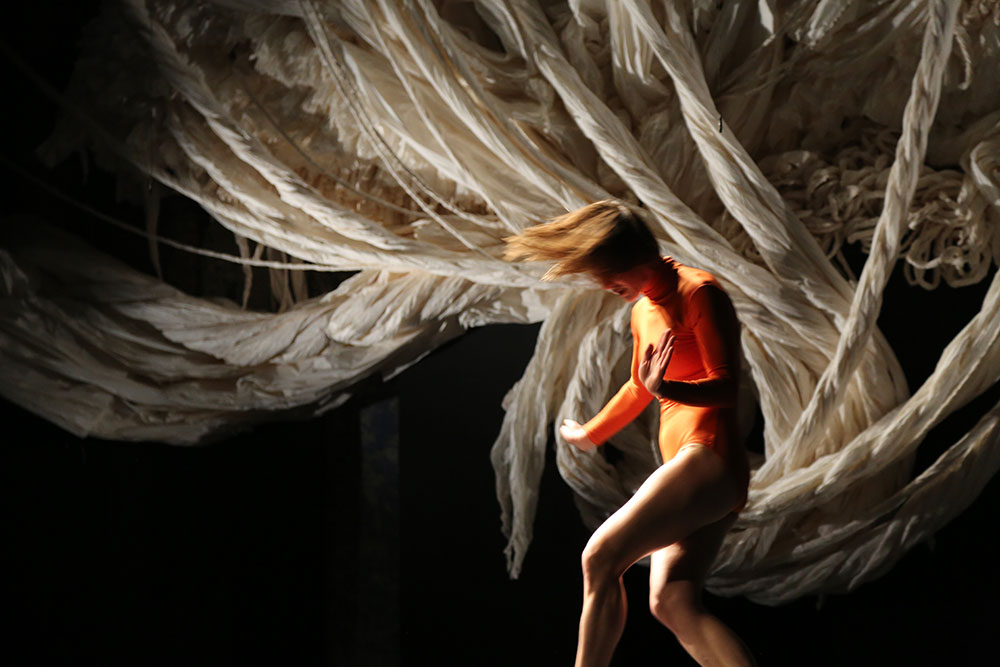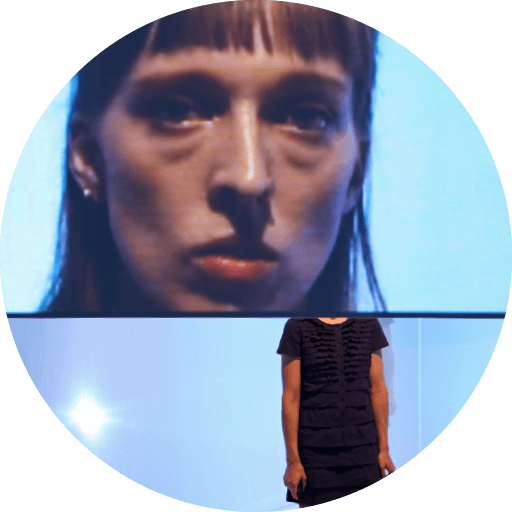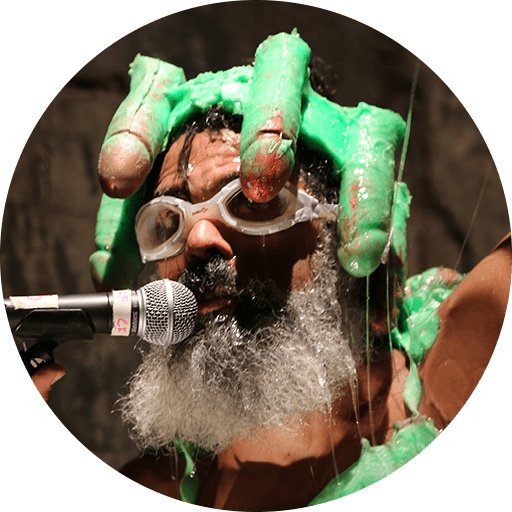In Performance: Ivy Baldwin Dance, Keen [No. 2]
Philip Gates, Contemporary Performance
Philip Gates, Contemporary Performance
A massive installation constructed out of white paper (by the artists Wade Kavanaugh and Stephen B. Nguyen) fills the back wall of the Abrons Playhouse. Its elaborate, vaguely ominous assemblage of coils, tendrils, and vortexes loom over a single dancer alone in the space, but her bright orange leotard and grounded, deliberate movements hold their own, commanding our attention. Later, the stage is overtaken by a group of similarly attired women: trilling with increasing aggression, they gradually assemble into a pack, crawling in circles in a feral display until they exhaust themselves and lay quiet. Ivy Baldwin arises for a quiet solo, holding her leg suspended in air for so long it begins to seem like something separate from her body, before making a slow, shuddering exit. Throughout, the paper installation is impassive, unchanging and remote—until a furious sequence near the end of the work connects it to the dancers and the rest of the space with thrilling tangibility.
Created in response to the death of Baldwin’s close friend and collaborator Lawrence Cassella, Keen [No. 2] engages head-on with grief, its rituals and physical manifestations. Alternating large group sequences with intimate solos and duets, the performance stages mourning on various scales, from the communal to the deeply personal. Where does the body hold grief, and how does it remember loss? Through ceremonies both public and private, the choreography offers up a wide spectrum of possibilities. In the group sections, informed by Baldwin’s research into the Irish tradition of keening, the dancers’ bodies have a wild and dangerous energy; at times these sequences approach an almost rapturous collective catharsis. In the solos (by Baldwin and her longtime collaborators Eleanor Smith and Katie Workum), the bodies are more controlled but no less raw, accessing and provoking visceral emotion.

At the center of the piece is a tender duet between Smith and Workum. Smith stands behind Workum, guiding her limbs like a trainer or a healer; under this coaxing, Workum emits low, mournful cries that eventually resolve into the Shaker dancing song “Simple Gifts.” It comes across as both elegy and exhortation: “by turning, turning we come round right.” Baldwin is grappling with something that, like that monumental accumulation of paper on the back wall, is enormous and inscrutable. In response she turns, turns, and the honesty and artistry with which she and her company do so is itself a gift.
Philip Gates for Contemporary Performance – June 15, 2017.





























